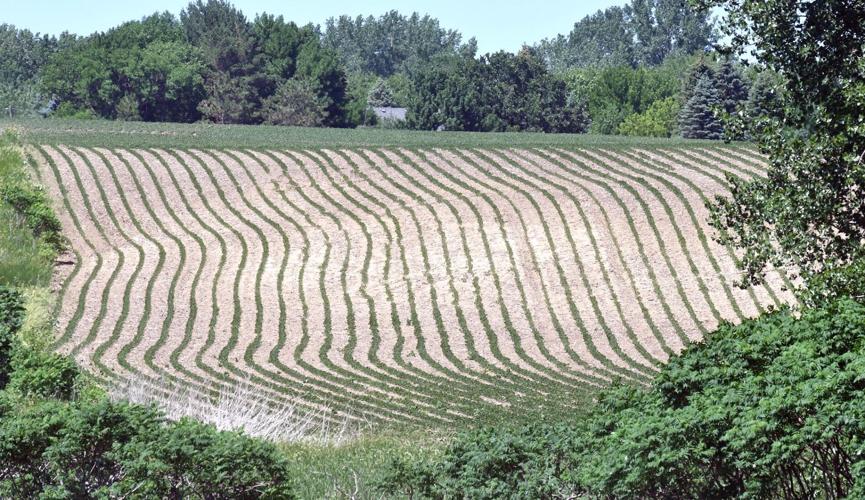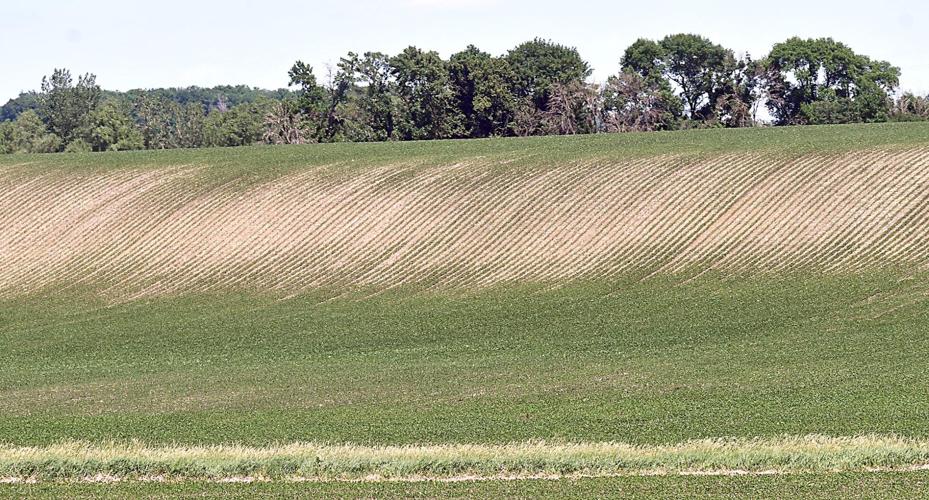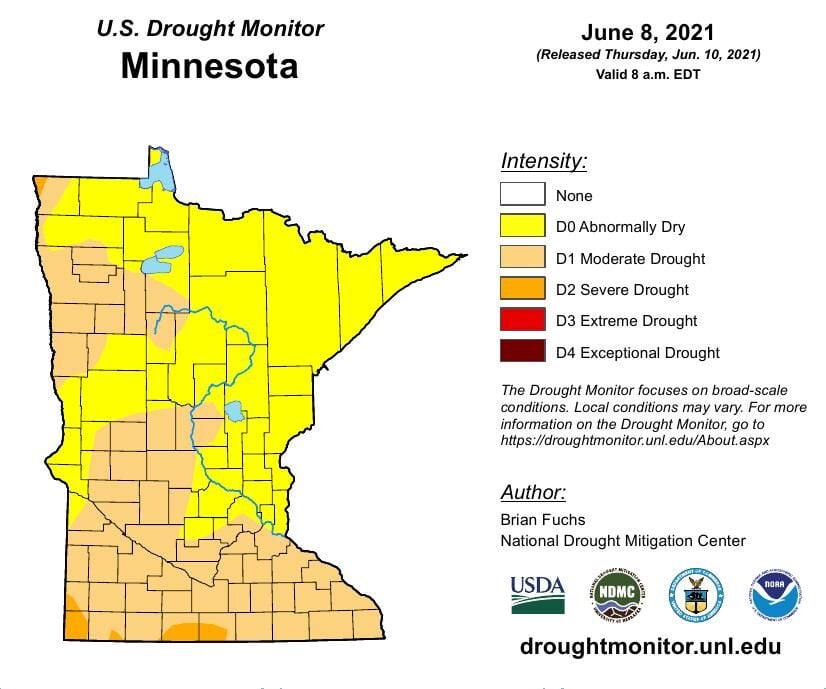The crop year started great.
There was perfect planting weather early on. Then heat and good emergence.
But the unusually hot, dry weather is quickly bringing worry.
“It’s not dire, but it’s worrisome,” said St. James farmer Paul Torkelson, who also serves as a state lawmaker.
Kent Thiesse, a farm management analyst at MinnStar Bank in Lake Crystal, agrees that crops are so far hanging in there, but like many, he has a sense conditions may be shaping up for a period of damaging drought.
“When they start talking about longer range weather trends and predictions, they’re comparing it to the 1930s, which you don’t want to hear. But things can change quickly,” Thiesse said.
Torkelson, too, said the weather pattern we’ve been stuck in brings a bad feeling. “It just seems like we’re setting up for a genuine drought.”
The weather forecasters aren’t being too helpful for those hoping for a quick turnaround. The 10-day forecast has just a few days with a slight chance of scattered thunderstorms.
“We need a good soaker,” Thiesse said. “We need a widespread rain in the next week. The rain we got last week was anywhere from none to up to a half inch depending where you were.”
Torkelson一些作物已经struggli说ng. “The lighter, sandier soils are really starting to show stress.”
Agronomist Tom Hoverstad, a scientist at the University of Minnesota Southern Research and Outreach Center in Waseca, is seeing the same thing.
“We’re starting to see some stress, but on the better portions of fields that we expect to do well, they are still looking good.”
He said it’s good that crops don’t need a lot of moisture this time of year. “Corn is using about one-tenth of an inch of water a day now where later in the season they’ll use a third of an inch a day.”
He said said the unusually hot and dry spring harkens to nearly three decades ago. “Everyone remembers 1988 as a hot, dry year, and we were hotter and drier back then this time of year. So we’ve been here before,” Hoverstad said.

Sandy soils that don’t hold moisture are leaving crops stressed, but so far crops in black dirt/clay soils are holding up. Farmers say that could change quickly if the region doesn’t get a decent rain in the next week.
Thiesse said that while crops can rebound quickly with some decent rains, some damage is likely already being done. “People think it doesn’t matter this time of year because the crops will get rain and recover. But actually a corn plant at this stage is starting to develop yield potential, so if it’s stressed now, it has the potential to cut yield.”
He said the recent high temps also have affected some other crops.
“The extreme heat is impacting hay production. They had a pretty good first hay cutting but the second cutting, there hasn’t been much growth. And the heat and dry impact canning crops like peas, too.”
Drought building
The growing drought potential began building early this spring. The first 10 days of April were about 10 degrees warmer than normal with some 85-degree days, according to records at the Waseca Research and Outreach Center.
Just more than a half-inch of rain fell in April, 2.6 inches below normal. That made the month the fourth driest April in 110 years of records at Waseca.
Only April of 1987 was drier in recent times; then you have to go back to the 1920s.
The mostly warmer and drier weather continued with extremely high temps added early this month. The week ending June 9 brought hot and dry weather that set up the precarious conditions the state is now facing.
Temperature averaged 80.1 degrees in Waseca, which was 14 degrees warmer than normal.
No rain fell during the time period when normally Waseca would get 1.24 inches.
The U.S. Drought Monitor shows moderate drought has been creeping across Minnesota, with the southwest and western Minnesota the driest.
The 10 days ahead should see a continuation of more moderate high temperatures, with the forecast mostly ranging from the upper 70s to mid 80s, with a few scattered days around 90 degrees.
But rain chances don’t look good. There are just a few days with a relatively slight chance for scattered thunderstorms.
The Minnesota Crop Report released Monday by the USDA showed the hot, dry weather reduced soil moisture and crop condition ratings during the week ending June 13.
Topsoil moisture supplies were rated 19% very short, 45% short, 35% adequate and 1% surplus in the state. Subsoil moisture supplies were rated 13% very short, 44% short, 42% adequate and 1% surplus.





























Commented
Sorry, there are no recent results for popular commented articles.